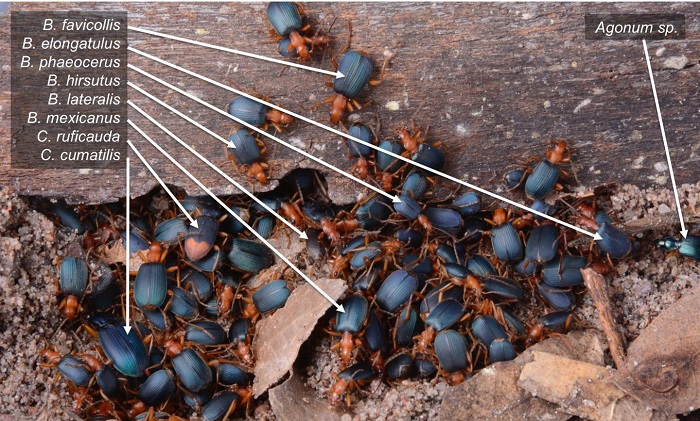ออฟไลน์ด้วยแอป Player FM !
Bombardier Beetle Buddies
Manage episode 229666400 series 86854

BOB HIRSHON (Host):
Bombardier beetle buddies. I’m Bob Hirshon and this is Science Update.
Bombardier beetles are bright blue and red, which helps to advertise their fierce defensive arsenal: burning hot toxic chemicals they can spray from nozzles on their butts. In the journal PLOS ONE, University of Arizona entomologist Wendy Moore and her colleagues report that while the nocturnal beetles are solitary at night, many different species shelter together during the day, under rocks.
WENDY MOORE (University of Arizona, Tucson):
It’s actually a fairly unusual phenomenon for different species to regularly associate with one another.
HIRSHON:
One reason could be that the different species bring different toxic weapons.
MOORE:
–that probably contribute to a big chemical cocktail for a vertebrate predator that might find them during the day.
HIRSHON:
And the huge mass of brightly colored beetles could warn would-be predators to back off. I’m Bob Hirshon for AAAS, the science society.
Story by Bob Hirshon
The post Bombardier Beetle Buddies appeared first on Science Update.
34 ตอน
Manage episode 229666400 series 86854

BOB HIRSHON (Host):
Bombardier beetle buddies. I’m Bob Hirshon and this is Science Update.
Bombardier beetles are bright blue and red, which helps to advertise their fierce defensive arsenal: burning hot toxic chemicals they can spray from nozzles on their butts. In the journal PLOS ONE, University of Arizona entomologist Wendy Moore and her colleagues report that while the nocturnal beetles are solitary at night, many different species shelter together during the day, under rocks.
WENDY MOORE (University of Arizona, Tucson):
It’s actually a fairly unusual phenomenon for different species to regularly associate with one another.
HIRSHON:
One reason could be that the different species bring different toxic weapons.
MOORE:
–that probably contribute to a big chemical cocktail for a vertebrate predator that might find them during the day.
HIRSHON:
And the huge mass of brightly colored beetles could warn would-be predators to back off. I’m Bob Hirshon for AAAS, the science society.
Story by Bob Hirshon
The post Bombardier Beetle Buddies appeared first on Science Update.
34 ตอน
כל הפרקים
×ขอต้อนรับสู่ Player FM!
Player FM กำลังหาเว็บ




